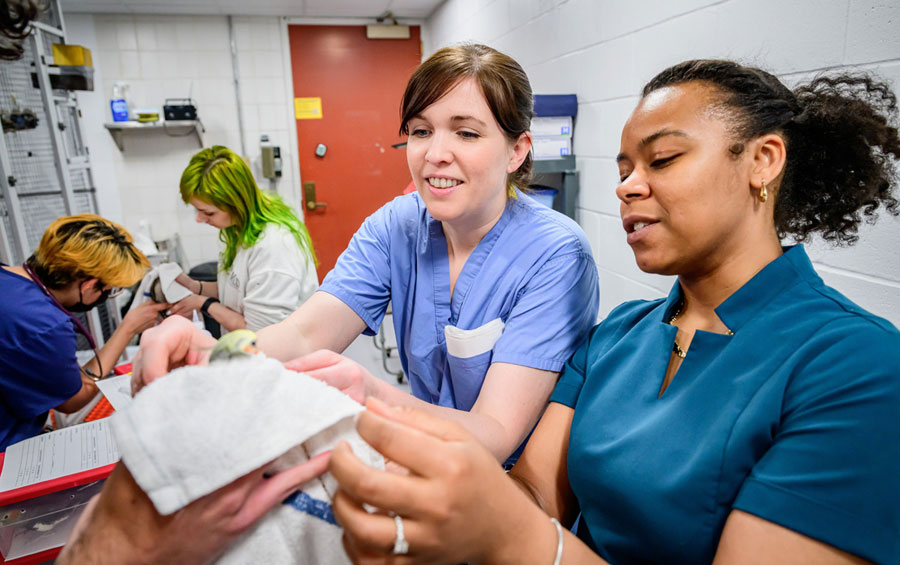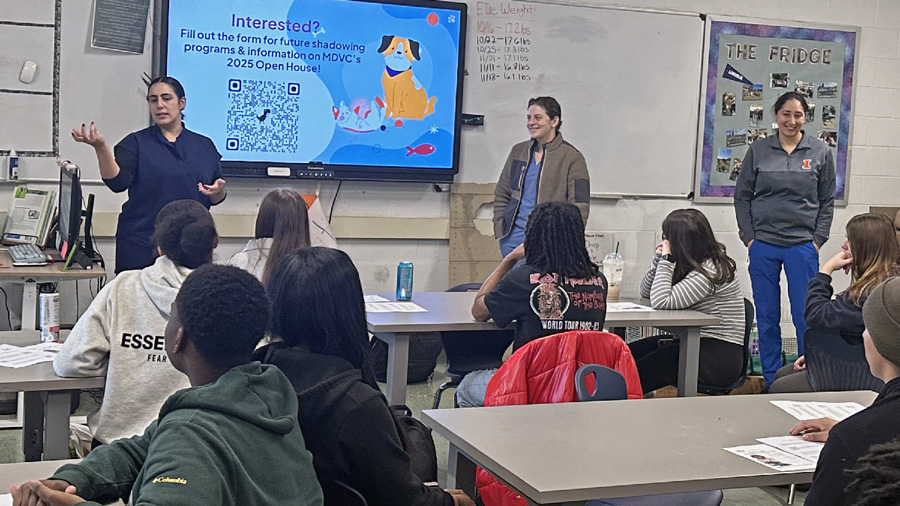This message will appear in the August/September 2021 issue of the Chicago Veterinary Medical Association Bulletin.
On June 10, a group of 33 dogs and one cat arrived at O’Hare Airport, brought to the United States from Azerbaijan by an animal welfare group. One of the dogs, a six-month-old puppy, was adopted into a home in Pennsylvania, where it was identified as carrying the canine variant of rabies.
This recent incident hits close to home. It shows just how easily a pathogen that was declared eliminated from the United States in 2007 could return.
The Scourge of Rabies
According to the Centers for Disease Control and Prevention (CDC), approximately 59,000 people worldwide die of rabies every year. All but 1% of these deaths are due to rabid dogs.
Thanks to veterinary and public health initiatives, there is a much different story in the United States. Fewer than 140 people have been infected with rabies over the past 60 years, with the last recorded human death in 2018. One-quarter of those U.S. human rabies cases resulted from a dog bite that occurred overseas. Of the human rabies infections acquired in the United States, about 70% were attributed to exposure to bats.
With the canine variant of rabies eliminated, the annual U.S. cases of rabies in pets holds steady at around 65 dogs and more than 250 cats; these are animals that had not been vaccinated and acquired rabies from bats, raccoons, or other wildlife.
Rabies surveillance in Illinois has identified between 50 and 100 rabid bats each year from 2011 to 2019. During that period there was also one bovine case in 2011 and one feline case in 2016, according to data on the Illinois Department of Public Health website.
New CDC Regulations
On June 14, the CDC announced new regulations for pet importation. Effective July 14, dogs could no longer be imported into the U.S. from countries that have a high risk for dog rabies. About 100 countries, mostly in Asia, the Middle East, Eastern Europe, Africa, and South America, are on the high-risk list.

Dr. Will Sander, an assistant professor of preventive medicine and public health and the director of our college’s DVM/MPH Joint Degree Program, recorded a talk for the AVMA Convention last month that provided details about the new regulations. (If you registered for the convention, you can still watch his session on pets and policy, which also covers such topics as telehealth, emotional support animals, exotic pets, opioids, and cannabis.)
Dr. Sander shared some information about pet importation for this column.
“Among the new safety measures are a reduction in the number of dogs that can be transported per airline passenger,” he said. “Now the maximum is three dogs per person, whereas previously one traveler was allowed to bring groups of 20 or 30 dogs.”
Just how many dogs are imported into the United States? “There has been a huge increase in the number of rescue dogs brought to the U.S. over the past five years,” said Dr. Sander. “Advocacy groups have raised public awareness about the kill markets in other countries. The CDC estimates that about one million dogs per year have been entering the United States, and around 6% of these come from high-risk countries.
“After October 14, dogs will be allowed into the U.S. only at an airport with appropriate quarantine facilities. So far, only JFK in New York has been identified as an approved port of entry.”
Where Did Your Pet Come From?

For veterinarians, getting a complete history on the origins of your client’s new puppy takes on new urgency given the international sources of pets. The problem is, will the client know?
The provenance of shelter dogs is often murky. When we adopted our family dog, we were told she was part white German shepherd. As she grew, her build and behavior didn’t match up to that breed. Instead, she has come to strongly resemble a Japanese breed called a Jindo, and I am curious to learn what genetic testing might reveal.
Dr. Becky Morrow, who joined our faculty in June to lead the shelter medicine program, brings a pragmatic perspective to the problems associated with pet importation for adoption.
“Like it or not, the importation of dogs is not going to end,” she said. “The conditions and suffering of dogs in many other countries are far worse than what we see here, and there are organizations devoted to relieving that suffering.”
How We Can Help
She sees this situation as an opportunity for veterinarians to guide protocols that will put public health and safety first, while giving animals with the potential to be family pets their best chance at that life.
“The key will be coordination between organizations based in the United States and those in the countries with too many dogs,” she said. “To do it right, these organizations need to reallocate their resources. Ideally, the animals would be quarantined in their home country, where they could be given initial vaccinations and deworming and evaluated for behavioral concerns. Then, only healthy and highly adoptable animals would be imported.”
The new CDC regulations provide a necessary safeguard against pet importation that values profit over animal welfare and public health.
As veterinarians, we confront weighty and global problems every day, even when we are “just” vaccinating a puppy. As your go-to source of expertise, the College of Veterinary Medicine is here to support and partner with you to anticipate and address new challenges.
Featured image by Mohnish Landge on Unsplash




